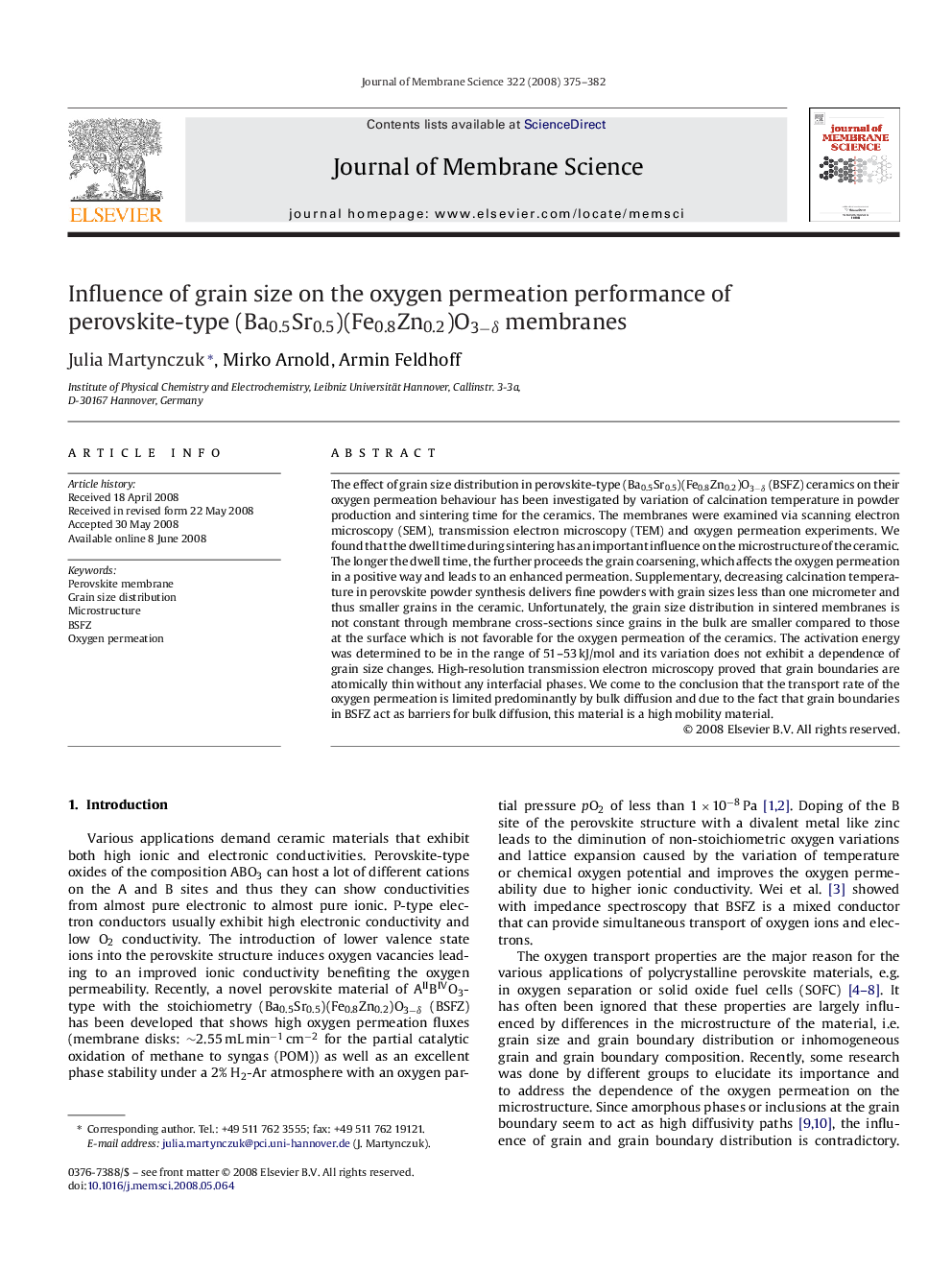| Article ID | Journal | Published Year | Pages | File Type |
|---|---|---|---|---|
| 637650 | Journal of Membrane Science | 2008 | 8 Pages |
The effect of grain size distribution in perovskite-type (Ba0.5Sr0.5)(Fe0.8Zn0.2)O3−δ (BSFZ) ceramics on their oxygen permeation behaviour has been investigated by variation of calcination temperature in powder production and sintering time for the ceramics. The membranes were examined via scanning electron microscopy (SEM), transmission electron microscopy (TEM) and oxygen permeation experiments. We found that the dwell time during sintering has an important influence on the microstructure of the ceramic. The longer the dwell time, the further proceeds the grain coarsening, which affects the oxygen permeation in a positive way and leads to an enhanced permeation. Supplementary, decreasing calcination temperature in perovskite powder synthesis delivers fine powders with grain sizes less than one micrometer and thus smaller grains in the ceramic. Unfortunately, the grain size distribution in sintered membranes is not constant through membrane cross-sections since grains in the bulk are smaller compared to those at the surface which is not favorable for the oxygen permeation of the ceramics. The activation energy was determined to be in the range of 51–53 kJ/mol and its variation does not exhibit a dependence of grain size changes. High-resolution transmission electron microscopy proved that grain boundaries are atomically thin without any interfacial phases. We come to the conclusion that the transport rate of the oxygen permeation is limited predominantly by bulk diffusion and due to the fact that grain boundaries in BSFZ act as barriers for bulk diffusion, this material is a high mobility material.
